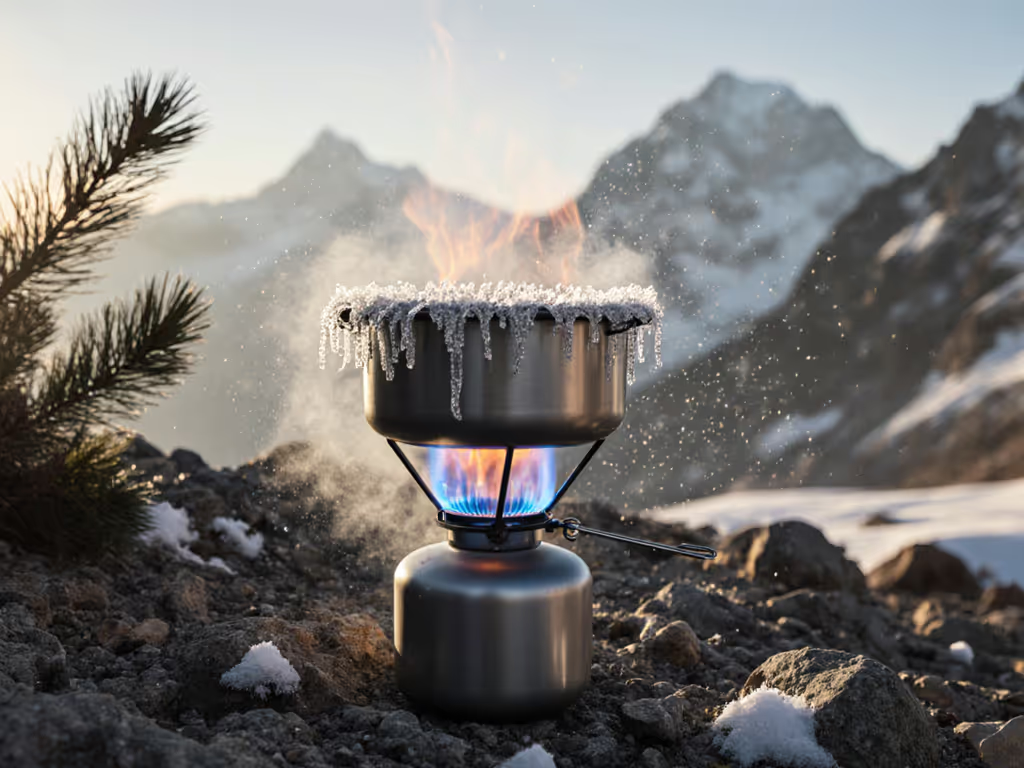
Are Canister Stoves Reliable in Cold Weather? 5 Expert-Backed Strategies to Boost Performance
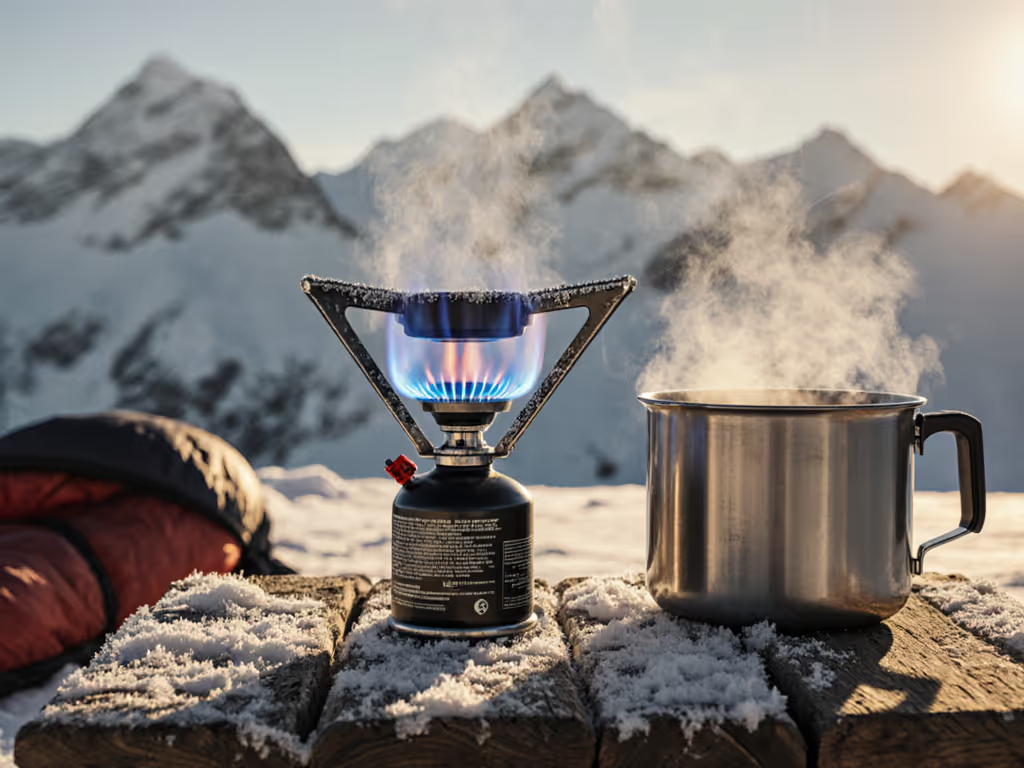
Are canister stoves reliable in cold weather, or do they sputter and stall when temperatures plunge? If you have ever watched a flame shrink as frost crept up a metal canister, you already know that winter cooking is not just about heat output, it is about physics. The good news is that with the right fuel, stove configuration, and handling tactics, you can transform a fickle winter setup into a consistent performer. In this in-depth guide, you will learn why cold throttles gas flow, how to work with vapor pressure rather than against it, and five expert-backed strategies that keep meals hot when the mercury dives.
Heatinerary exists for this moment: when trip ambitions collide with tough conditions and you need clear, field-tested guidance. Campers, backpackers, and outdoor enthusiasts often face conflicting advice about stoves, fuels, and cookware, especially across different elevations, routes, and seasons. That is exactly the problem Heatinerary solves through comprehensive camping stove reviews, deep-dive comparisons of fuel performance below freezing, and the Trip-Tuned Stove Lab for precise stove, fuel, and cookware matching. As you read, watch for where each strategy fits your itinerary, then see how Heatinerary’s Trip-Tuned Stove Lab turns these best practices into a tailored plan for your next cold-weather camp kitchen.
Are canister stoves reliable in cold weather? The physics you need to know
Canister stoves depend on vapor pressure inside the canister, which changes with temperature and gas composition. Most backpacking canisters contain blends of propane and isobutane, sometimes with a portion of normal butane, each with a distinct boiling point and vapor pressure curve. Propane boils at about minus 42 degrees Celsius (C) or minus 44 degrees Fahrenheit (F), isobutane at about minus 12 degrees Celsius (C) or 10 degrees Fahrenheit (F), and normal butane at about minus 0.5 degrees Celsius (C) or 31 degrees Fahrenheit (F). Below a gas’s boiling point, it does not vaporize fast enough to sustain a strong flame, which is why canisters feel sluggish or “empty” when they are simply too cold.
As the canister chills during use, the flame further lowers internal temperature through evaporative cooling. In upright canister stoves that rely on vapor feed, this can create a loop: less vapor pressure yields a weaker flame, which cools the canister more, which further drops pressure. Remote canister stoves with a preheat tube can run the canister inverted, feeding liquid fuel to the burner so the preheat tube vaporizes the mix. This design partially decouples performance from canister temperature and expands usable conditions well below freezing. Understanding these mechanisms sets the stage for smart winter tactics rather than frustrating trial and error.
Five expert-backed strategies to boost performance
1) Select a true winter-ready fuel blend
Watch This Helpful Video
To help you better understand are canister stoves reliable in cold weather, we've included this informative video from thruhikers. It provides valuable insights and visual demonstrations that complement the written content.
Not all canisters are equal in the cold. Choose blends with higher propane content and isobutane rather than normal butane to push your usable range lower. Many “four-season” mixes combine propane and isobutane specifically to maintain vapor pressure around minus 15 degrees Celsius (C) to minus 20 degrees Celsius (C) with proper handling. Even within similar-looking canisters, subtle formulation differences can shift cold performance dramatically, which is why label details matter and why skiers and winter backpackers tend to stock specific blends. For verified cold-weather data across fuels, see our propane vs butane vs white gas comparison.
Consider bringing two smaller canisters instead of one large one when temperatures will hover near the blend’s limit. Smaller canisters warm faster in your jacket and share heating more evenly during use. Track how much fuel you actually burn per liter in the cold; typical upright stoves may use 12 to 18 grams per liter at mild temperatures, but winter wind and lower vapor pressure can push consumption above 20 to 30 grams per liter. Recording your consumption helps you select the right blend and quantity through Heatinerary’s Trip-Tuned Stove Lab, which factors route, daytime highs, overnight lows, and cook style into specific fuel recommendations.
2) Manage canister temperature proactively and safely
Keeping the canister a few degrees warmer than ambient can be the difference between weak sputters and a rolling boil. Before cooking, carry the canister in an inner pocket close to body heat, or sleep with it inside your sleeping bag in a protective sack. During cooking, place the canister on a small foam pad to insulate it from snow and avoid direct contact with ice that wicks warmth. A classic technique is the “lukewarm water bath”: set the canister in a shallow bowl of water that is just above freezing to buffer evaporative cooling and stabilize pressure.
Safety comes first. Never overheat a canister with an external flame, radiant shield, or hot water. Keep canister skin temperature comfortably below about 50 degrees Celsius (C) or 122 degrees Fahrenheit (F); a quick touch test should feel hot but not painful, yet remember that gloved hands numb sensation. Avoid fully enclosing upright canisters with tight windscreens that trap heat around the canister. Remote canister stoves separate the burner from the canister, letting you run a full windscreen at the burner while keeping the canister outside the hot zone, which makes temperature management easier and safer.
3) Use a remote canister stove with a preheat tube and invert the canister
Remote canister stoves with a preheat tube are winter workhorses because they can vaporize liquid fuel at the burner. By inverting the canister once the stove is warm, you feed liquid to the preheat tube, which turns it into gas before it reaches the jet. This bypasses the low vapor pressure bottleneck in cold weather and maintains consistent output as the canister cools. It also avoids starvation when propane in a blend burns off first, leaving isobutane to struggle alone near its boiling point.
Practice the sequence in mild conditions: start the stove with the canister upright, allow the preheat tube to warm for a minute, then gently invert the canister using the stand designed for that model. Many manufacturers provide feet or cradles that stabilize an inverted canister, reducing the risk of tip-over. Use a full-height windscreen around the burner to improve efficiency, and keep the canister itself outside the windscreen. Combined with a heat exchanger pot and a tight lid, a remote canister system can rival liquid fuel white gas stoves in moderate subfreezing conditions while remaining simpler to operate.
4) Master wind blocking, cookware choice, and pot lids
Wind is a stealthy fuel thief in winter. A breeze that seems mild can double boil times by whisking heat away from pot sides. Use a stable, well-vented windscreen around the burner, and choose cookware with heat exchanger fins to capture more heat into the pot. For step-by-step setups and picks, check our essential windscreen guide for safer, more efficient burns. A snug lid reduces steam loss while also keeping snow flurries out, and a slightly wider pot diameter increases flame contact area for faster boils and improved fuel economy.
Small details add up. Center the pot carefully to prevent flame from licking up the sides, which wastes energy and can scorch nonstick coatings. Keep simmering to a minimum and favor “just-add-hot-water” meals that need brief boils rather than long simmer times. If you do simmer, consider a simmer ring or a stove known for fine control so you are not blasting precious grams of fuel. Heatinerary’s stove and cookware reviews highlight pot and burner pairings that measurably reduce boil times and grams per liter burned in gusty, below-freezing conditions.
5) Plan for altitude, meal style, and redundancy
Elevation changes the equation in two different ways. Lower air pressure at higher elevations raises canister vapor pressure relative to ambient, which slightly helps cold performance, yet water also boils at a lower temperature, which can complicate cooking certain foods. In practice, you often gain a small pressure cushion but still need disciplined wind blocking and canister warming to hold performance steady. Your menu matters too; meals that rehydrate with near-boiling water conserve fuel compared to simmer-heavy recipes that fight heat loss for extended periods.
Build redundancy into winter plans. For multi-day trips near the limits of a blend, pair a remote canister stove with a small backup like solid fuel tablets for emergency hot drinks, or carry a liquid fuel white gas stove when forecasts dip below minus 20 degrees Celsius (C) or minus 4 degrees Fahrenheit (F). Test your exact setup outside on a frosty morning at home: time one liter boils, measure grams burned, and note flame stability. Feed your results into Heatinerary’s Trip-Tuned Stove Lab to convert backyard data and route forecasts into a confident fuel budget and a gear checklist aligned to your conditions.
Fuel blends, boiling points, and realistic limits
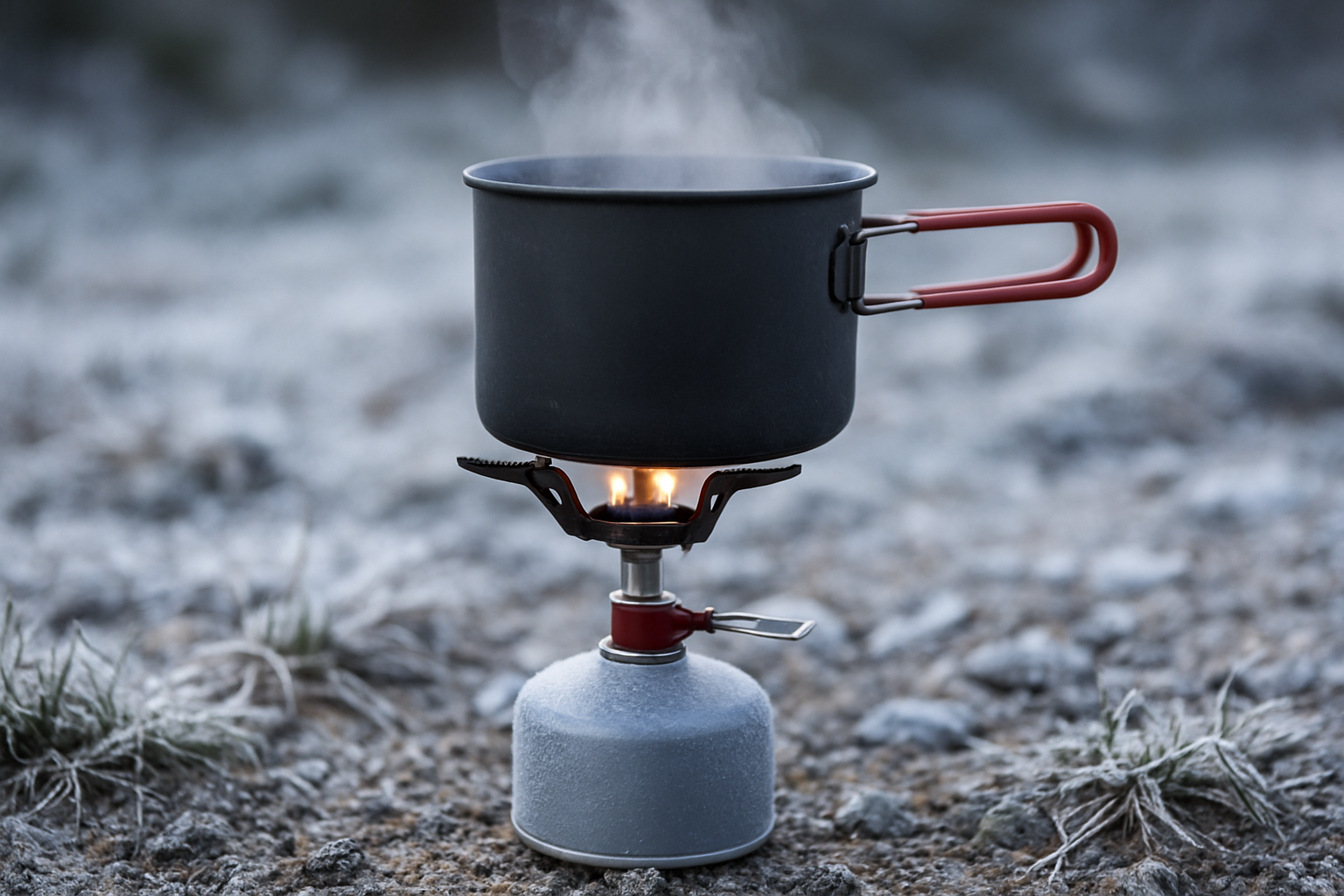
Knowing the boiling points of common gases and how blends behave under load guides your expectations in the field. Propane will vaporize in deep cold, but most backpacking canisters hold too little propane to run purely on it, and its fraction burns off first. Isobutane extends usability below freezing, while normal butane is best reserved for shoulder seasons above freezing. The table below summarizes core properties and practical tips winter travelers can use when comparing labels at the store or sorting canisters in a gear bin.
| Fuel or Blend | Boiling Point | Typical Use in Canisters | Practical Lower Temp Upright | With Inversion + Preheat | Notes |
|---|---|---|---|---|---|
| Propane | −42 degrees Celsius (C) / −44 degrees Fahrenheit (F) | Minor fraction in most backpacking canisters | Good pressure in severe cold, but limited by blend amount | Strong performer when available in blend | High pressure gas; pure propane requires heavy steel canisters not used for backpacking |
| Isobutane | −12 degrees Celsius (C) / 10 degrees Fahrenheit (F) | Primary cold-weather component | Near limit around −10 degrees Celsius (C) without warming | Works well below −15 degrees Celsius (C) with inversion | Preferred over normal butane for winter |
| Normal Butane | −0.5 degrees Celsius (C) / 31 degrees Fahrenheit (F) | Common in economy blends | Poor below freezing | Marginal with inversion; not recommended for deep cold | Reserve for warm weather trips |
| Propane + Isobutane “Four-Season” Mix | Mixed | Widely sold winter canisters | Usable to about −10 to −15 degrees Celsius (C) with warming | Reliable to around −20 degrees Celsius (C) with inversion | Best all-around choice for subfreezing trips |
A blend’s real-world cutoff depends on wind, canister fullness, and how aggressively you block drafts and manage canister temperature. Expect performance to decline faster as the canister empties because the remaining mix may be richer in isobutane or normal butane after propane burns off, lowering pressure further. Remote canister setups and heat exchanger pots can claw back lost performance. Heatinerary’s Trip-Tuned Stove Lab factors forecasted lows, wind speeds, elevation, and your meal plan to recommend specific blends and quantities, taking guesswork out of winter provisioning.
Field-tested outcomes: how tactics change winter results
What does all of this mean on a frosty morning when you just want coffee and oatmeal quickly? Field data shows a dramatic spread in boil times and fuel burn depending on whether you warm the canister, shield the burner from wind, and use a preheat tube. In moderate subfreezing conditions, adding only a windscreen and an insulated base under the canister can cut boil times by a minute per liter. With an inverted remote canister stove and a heat exchanger pot, performance tightens further, often matching or beating your three-season results in calm air.
The following examples are simplified averages from winter field notes and independent lab measurements cited by experienced trip leaders. Your numbers will vary, but the relative differences are instructive. Treat them as a starting point for your own timed boils and fuel weighing routine, then upload your baseline to Heatinerary so the Trip-Tuned Stove Lab can project consumption across your route’s temperature bands and nightly lows.
| Scenario | Conditions | Setup | 1 L Boil Time | Fuel Use (g/L) | Notes |
|---|---|---|---|---|---|
| Upright, unshielded | −5 degrees Celsius (C), light breeze | Standard isobutane mix, cold canister | 7–9 minutes | 28–35 grams per liter | Flame weakens as canister cools; long waits |
| Upright with warm canister | −5 degrees Celsius (C), light breeze | Four-season mix, canister pre-warmed, partial windscreen | 5–6 minutes | 20–26 grams per liter | Stable pressure from buffered canister temperature |
| Remote inverted canister | −15 degrees Celsius (C), calm | Remote stove, preheat tube, canister inverted, full windscreen | 4–5 minutes | 16–22 grams per liter | Liquid feed avoids vapor pressure stall |
| Liquid fuel white gas | −25 degrees Celsius (C), gusty | Pumped bottle, primed burner, full windscreen | 5–7 minutes | Varies by model | Reliable in deep cold; more setup work |
Even a few minutes saved per boil across breakfast, dinner, and hot drinks add up in dark winter hours. Faster boils also mean less exposure time for fingers and more time in a warm sleeping bag. With measured tests, you can choose the lighter canister option for a shoulder season trip or decide when a liquid fuel white gas stove is worth the mass. Heatinerary’s guides outline testing protocols and provide worksheets so your practice runs translate into predictable field performance rather than surprises.
Canister vs liquid fuel: when to switch systems
Canister stoves win for simplicity and speed from spring through most winter days, especially in the hands of someone who warms canisters, blocks wind, and uses a remote inverted setup when needed. Liquid fuel white gas stoves shine when temperatures plunge well below minus 20 degrees Celsius (C) or minus 4 degrees Fahrenheit (F), when parties are large, or when melting many liters of snow each day. They require priming, pump maintenance, and more user skill, but they deliver steady output in brutal cold without relying on canister vapor pressure. Choosing between them is not ideological; it is a practical call based on your route and priorities.
Weight crossover is real. For solo or duo over a weekend in moderate cold, a canister system with a heat exchanger pot is usually lighter. For groups melting snow for four or more, liquid fuel can become more efficient per liter because you are running long burns where pump-up time becomes negligible. Use the comparison below to make a quick, condition-based decision, then calibrate with Heatinerary’s Trip-Tuned Stove Lab to see which side of the crossover your specific plan falls on this season.
| Factor | Canister Stove | Liquid Fuel White Gas Stove |
|---|---|---|
| Cold Reliability | Good to excellent with four-season blend, canister warming, and inversion | Excellent even in severe cold after proper priming |
| Ease of Use | Very easy; minimal setup | Moderate; requires priming and pumping |
| Wind Management | Remote canister allows full windscreen at burner | Full windscreen standard practice |
| Weight for Solo/Duo | Lighter in most winter scenarios | Heavier, but weight distributes well in groups |
| Snow Melting Volume | Efficient for modest volumes with heat exchanger pot | Best for large daily melt volumes |
| Maintenance | Low; keep jets clean | Moderate; pumps, seals, and jets need care |
| Safety Considerations | Avoid overheating canister; manage carbon monoxide (CO) | Control priming flare-ups; manage carbon monoxide (CO) |
How Heatinerary’s Trip-Tuned Stove Lab personalizes your setup
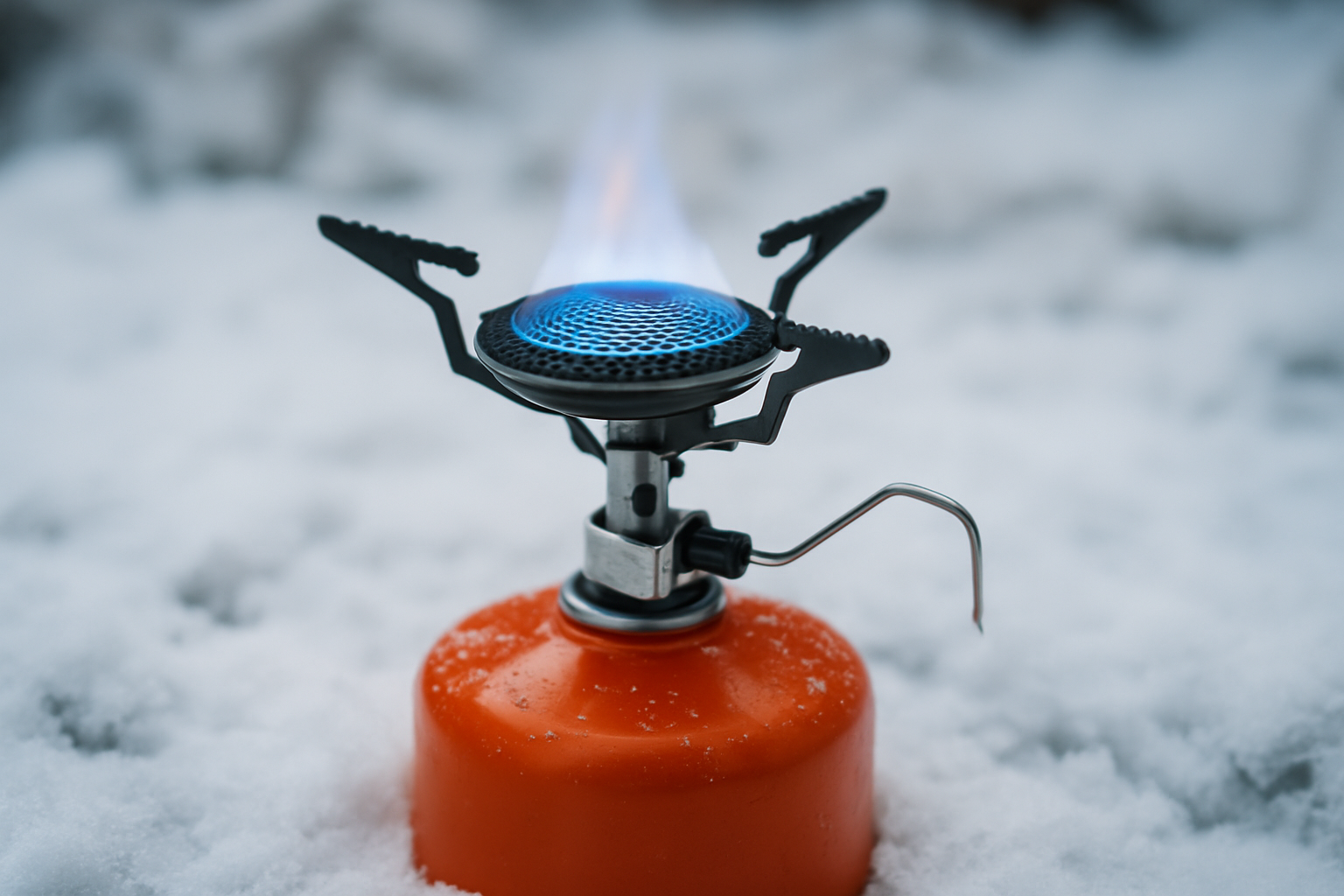
Generic advice stops where your route begins. Heatinerary’s Trip-Tuned Stove Lab for precise stove, fuel, and cookware matching turns your itinerary into specific, evidence-based gear picks. You enter details like trailhead elevation, expected overnight lows, group size, water source access, and the meals you intend to cook. The Lab runs these inputs through performance curves for fuel blends, stove architectures, and cookware efficiency, then outputs tailored recommendations that include canister type and quantity, whether to choose a remote canister with a preheat tube, and which pot and windscreen pair best with your burner in those conditions.
Beyond matching components, the Lab provides a simple test plan and a packing checklist. You get boil-time targets to validate at home, fuel-per-liter benchmarks adjusted for your wind profile, and safety reminders that include carbon monoxide (CO) management and canister temperature limits. If the forecast dips, Heatinerary flags when a liquid fuel white gas stove becomes the safer choice. This approach solves the common problem that campers and outdoor enthusiasts face: not knowing which stove setup will actually work best in a specific environment. With a trip-tuned plan in hand, you head out confident that your winter kitchen will perform as expected.
FAQs: practical answers to common cold-weather stove questions
Can I use a full windscreen with an upright canister stove? Yes, but only a partial, ventilated screen and only if you monitor canister temperature; better yet, use a remote canister stove so the canister stays outside the windscreen. Do carbon monoxide (CO) levels rise in shelters? Any combustion in enclosed spaces produces carbon monoxide (CO), so always ventilate, avoid fully enclosed vestibule cooking, and bring a reliable ignition source so you are not relighting repeatedly. Does altitude help or hurt? The lower ambient pressure at elevation slightly improves canister vaporization, but wind is often stronger, so use robust shielding and a heat exchanger pot.
How do I know if my canister is too cold? Watch for a flame that refuses to ramp up or for frost on the canister; if performance sags, try the lukewarm water bath trick and consider inverting a remote canister model once the preheat tube is warm. What about British thermal units (BTU) ratings on stove boxes? High British thermal units (BTU) do not guarantee winter success without the fuel and wind plan to support it. Can I blend my own fuels? No, never attempt to refill or mix fuels in backpacking canisters; rely on manufacturer-sealed blends and follow their guidance.
So, are canister stoves reliable in cold weather?
Yes, when you pair winter-appropriate blends, canister temperature control, effective windscreens, and the right stove architecture, you can cook fast and safely in most subfreezing conditions. The five strategies in this guide are the levers that matter most, and they are easy to practice well before your trip. With a little testing and a trip-tuned plan, you will know exactly when an inverted canister setup suffices and when to bring a liquid fuel white gas stove instead. Heatinerary is here to translate principles into a custom winter kitchen that just works.
Imagine stepping into a snow-lit morning, striking a spark, and seeing a steady blue flame roar to life on the first try. In the next 12 months, the combination of smarter blends, more efficient pots, and better remote-canister designs will make winter cooking even more predictable. So, are canister stoves reliable in cold weather for the routes and seasons you have been dreaming about?
Additional Resources
Explore these authoritative resources to dive deeper into are canister stoves reliable in cold weather.
- Will a Canister Stove Work for Winter Backpacking?
- Fellow Backpackers who bring camp stoves, what canister do you ...
Boost Cold-Weather Canister Stove Confidence with Heatinerary
Plan cold trips with confidence: Heatinerary’s Trip-Tuned Stove Lab matches stove, fuel, and cookware to your route, season, and weather so campers and backpackers cook safely and efficiently.
Related Articles

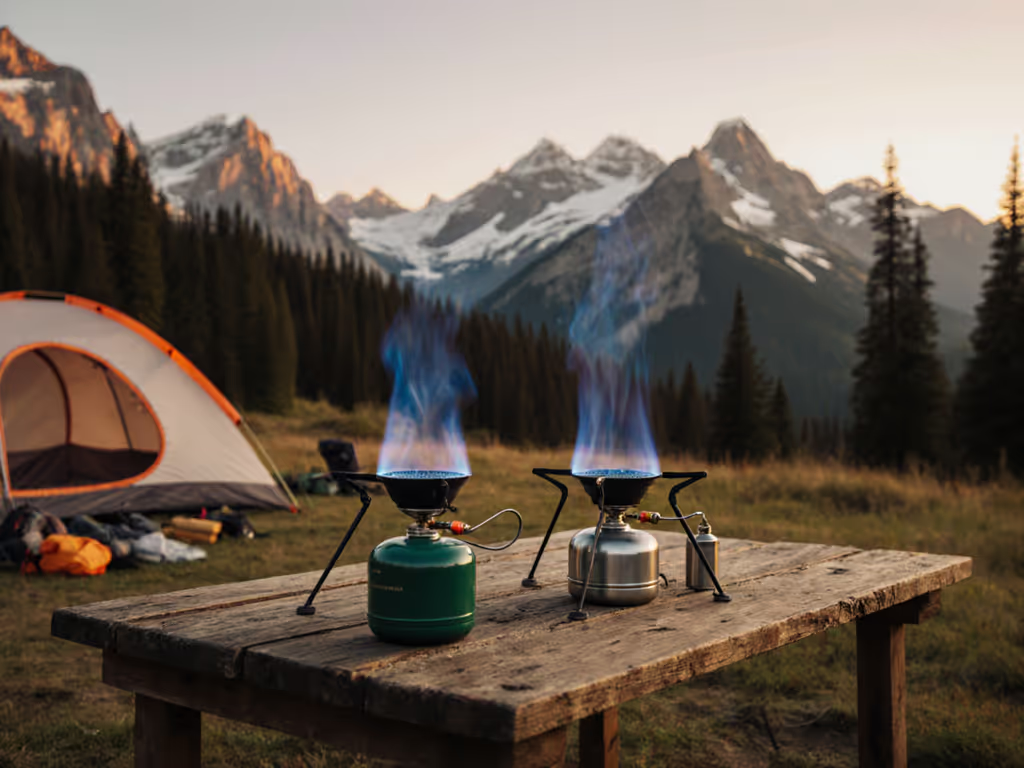
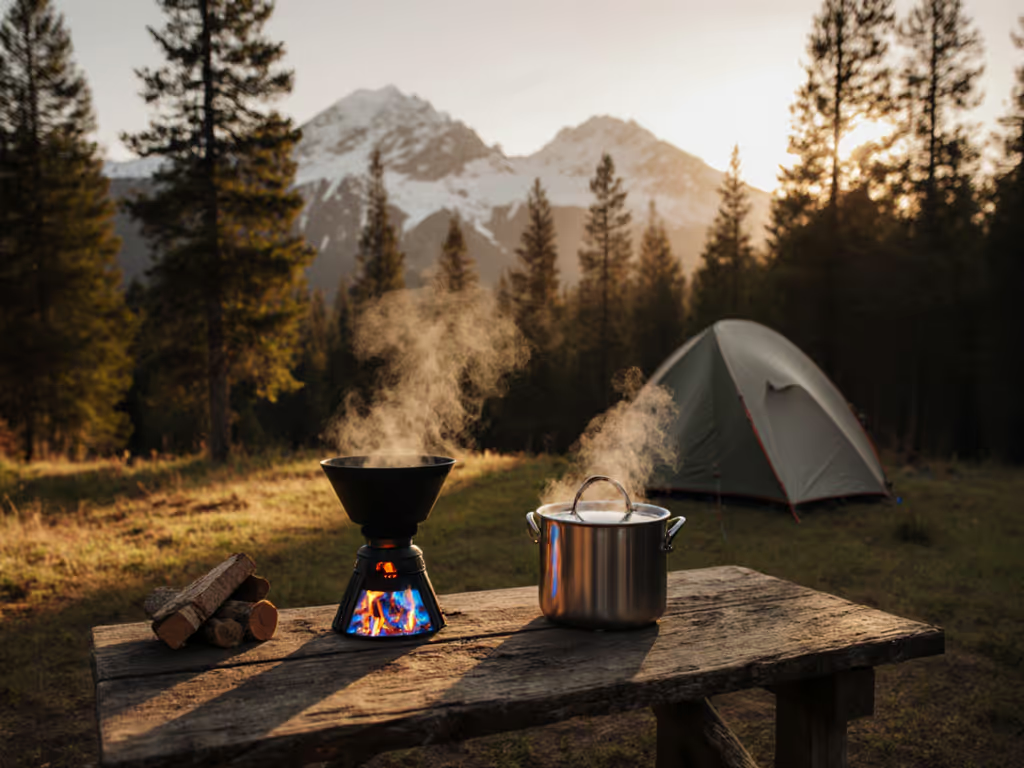
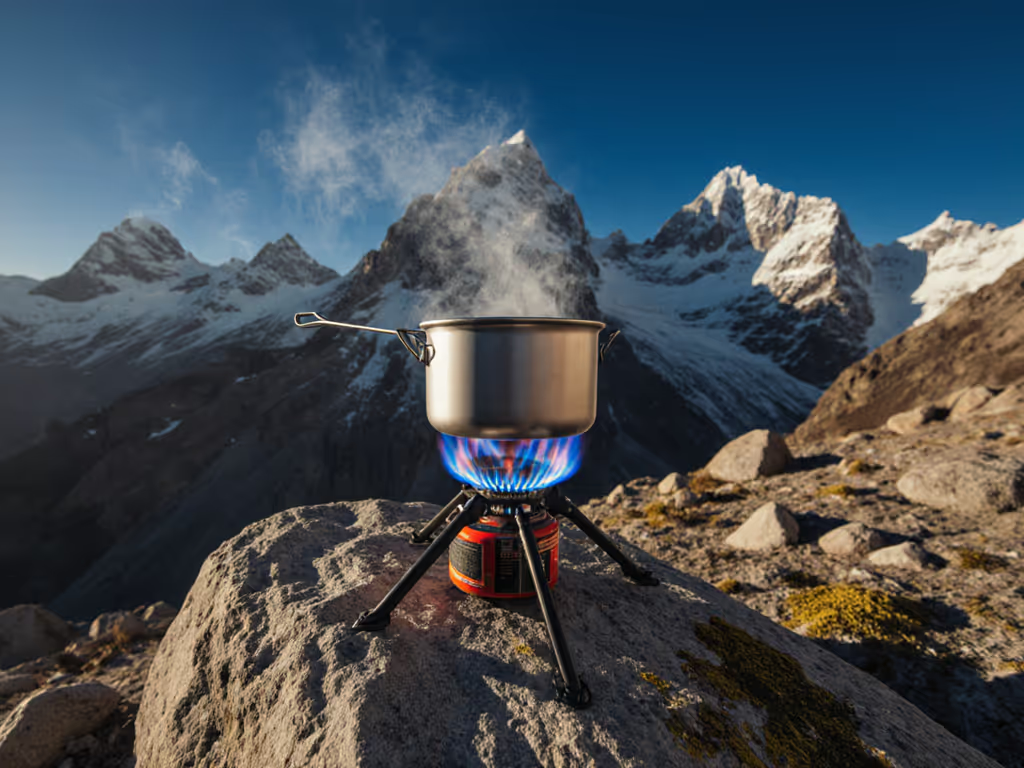
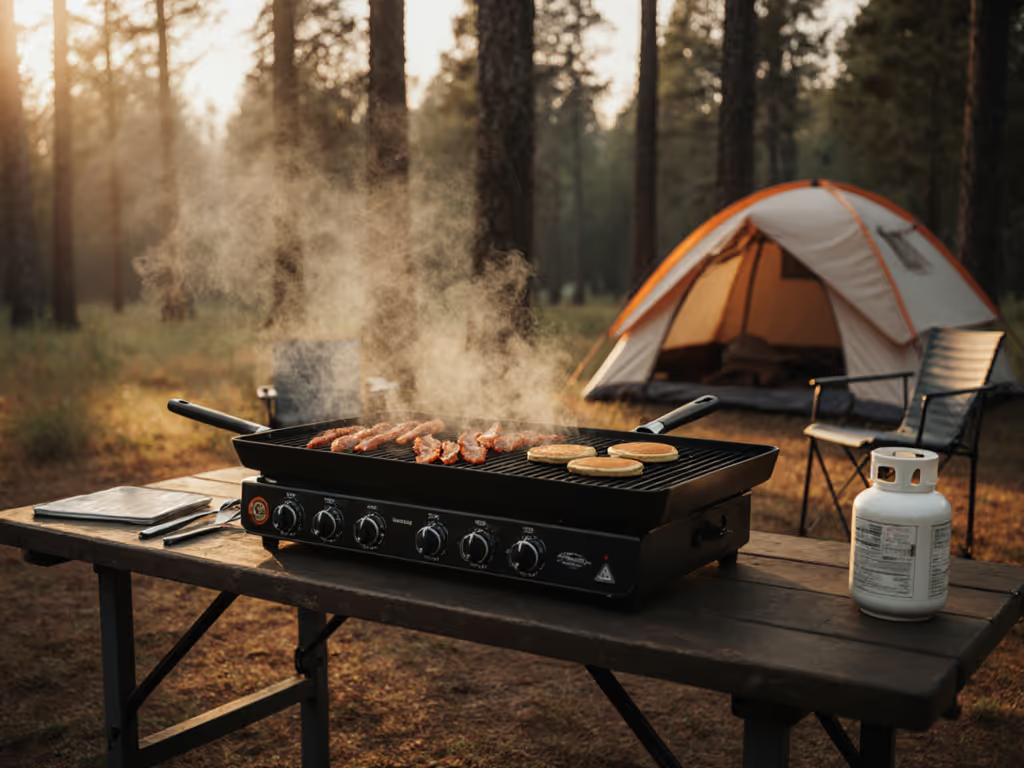
Family Camping Stoves: Top Griddle Performance Picks
Learn how cold and wind derail propane griddle performance and what to do about it - BTU density that matters, regulator and wind protection, and realistic fuel planning. Get clear guidance on safer setups and smarter choices (including when two single burners beat one big stove) to keep family meals hot and consistent.
